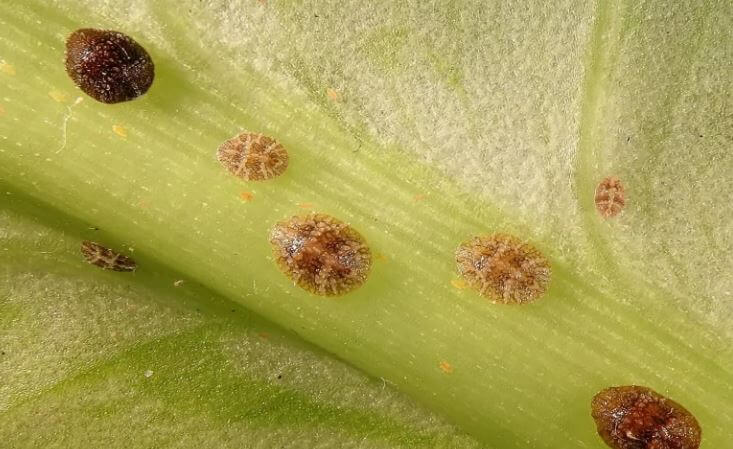Last Updated on September 8, 2023 by a Friendly Gardener
Pest infestations are an ordeal for gardeners whether indoors or outdoors. Pests steal nutrients from plants and do severe damage, even killing them when left untreated. The Monstera or “Swiss Cheese plant” is, like most houseplants at risk for pest infestations. Among troublesome houseplant pests, scales commonly appear on Monstera plants. Two kinds of scale insects take up residence on Monstera: soft scales and armored scales with round or oval brown spots on leaves and stems being a tell-tale sign.
Recognizing Scale on Monstera Plants
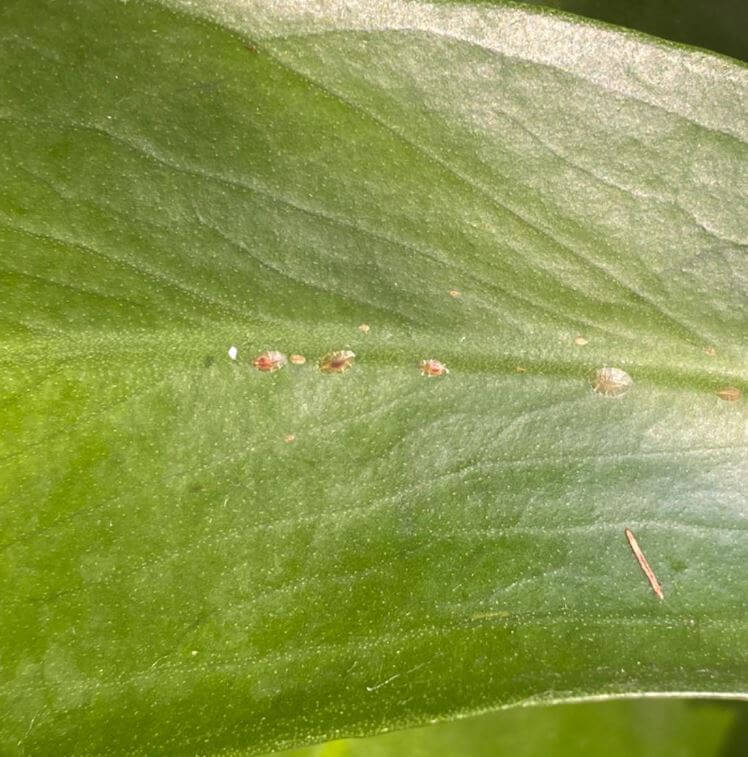
Scales are tiny insects, rarely measuring more than 1/6 of an inch in length. Their bodies may be brown, black, or creamy. They are members of the Coccoidea family and Hemiptera order. Scales generally appear in groups on leaves and stems. You will rarely see just one scale on monstera stem or foliage. They can spread quite rapidly to other houseplants in the vicinity, so if you see spots on stems or leaves, isolate your houseplant.
While there are more than a thousand insect varieties that form scales, they are generally classified into two groups:
-
Soft scales
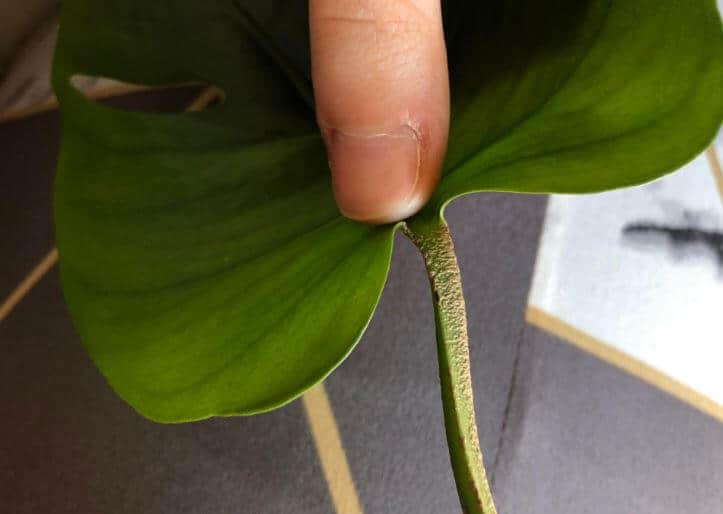
These pests can have oval or round, dome-shaped bodies. They tend to be it larger than armored scales and are characterized by waxy secretions on their surface. They also tend to be a bit more common o Monstera plants but are easier to eliminate.
-
Armored scales
These insects develop a hard shell on their bodies as protection from predators. Their body shapes are usually oval, elliptical, or elongated but the shell surface is smooth. They commonly take up residence on lower foliage, stems, and leaf joints. For a pesticide or insecticide to be efficacious, it must penetrate the armored shell. Armored-scale insects are stationary and may spread less quickly than soft scales.
Scale on Monstera is most often found on the undersides of leaves and stems appearing as flat or rounded shells. If the infestation is severe, you will be able to see them with the naked eye. If your plant has only one or two exemplars, they may be harder to recognize. Scale pests generally have two missions in life: to suck the sap from plants and to deposit their eggs. Neither is healthy for your plant.
One of the easiest scale infestation symptoms to recognize appears as a blackish-hued mold on the plant caused by the sticky honeydew they excrete and leave on plant surfaces. If they are left to their own devices, the foliage will eventually turn brown or blackish and die. Common symptoms of a scale insect presence include:
- brown scale on Monstera in the form of brown spots on foliage
- leaves turning yellow, brown, or black
- flies around the soil surface
- blackish-hued mold on the soil or plant surface
- wilting or drooping leaves and stems
- a sticky substance on leaves and stems
- stunted plant growth
Potential Scale Insect Damage to Monstera
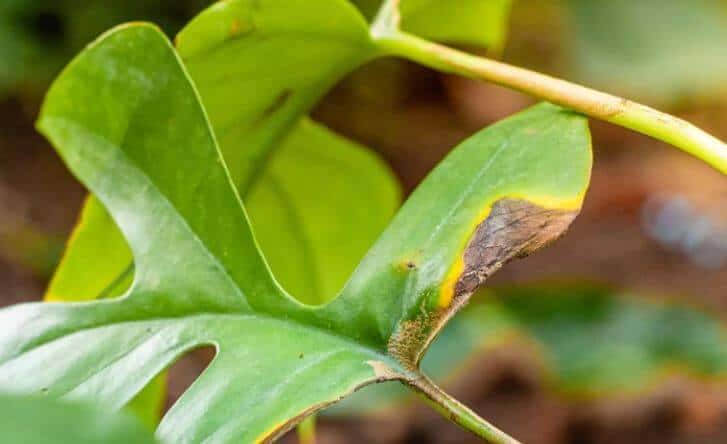
If these pests are permitted to proliferate freely, the infestation will at some point overwhelm your plant. As sapsuckers, they will damage both plant tissue and cells. Some varieties may even transmit toxins to your plant. Severe infestations will cause wilting stems, leaf drops, and general deterioration to death.
Why Choose a Monstera to Infest?

Generally speaking, it is improper plant care that paves the way to pest infestations. If a plant is unhealthy or weakened, it is the perfect victim of scale infestations. Contributing causes can be found in improper potting soil mix and overwatering.
Monstera potting soil needs to be loose, porous, and well-draining as Monstera are tropical plants that appreciate a moist climate. Improper potting soil can create the conditions for overwatering leading to stunted growth. If the soil does not drain quickly enough, your plant will be left sitting in soggy soil. Without air pockets, due to excess water, the Monstera root system will drown. Containers should also feature a sufficient number of drainage holes.
Overwatering can happen because Monstera needs soil to remain moist. When leaves begin to yellow this is often a sign of overwatering as are brown spots or patches on leaves. A moldy soil surface can also indicate overwatering. If the soil emits a foul odor, this usually indicates root rot from excessive watering. These conditions can weaken your Monstera plant making it more susceptible to scale infestations.
In either case, it is wise to repot with fresh potting soil that is loose and well-draining.
How to Get Rid of Scale on Monstera
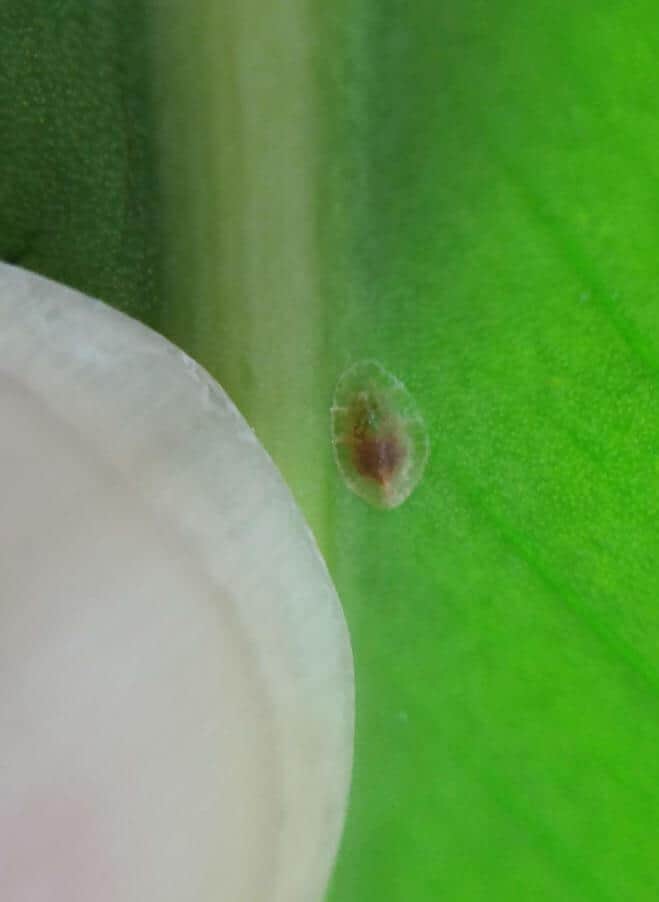
To rid your Monstera of scale, you need to help your plant in the fight. There are several methods that you can use to rid your Monstera of a scale infestation.
-
Neem oil
Neem oil is a popular pesticide and fungicide because it is an organic oil from the Neem tree. When sprayed correctly on your Monstera, the plant will absorb the oil which is toxic to pests, who will then ingest it when feeding on the plant. When applying commercial Neem oil, read dosages carefully and spray the entire plant.
-
Insecticidal Soap
Young scale insects can be eliminated using insecticidal soap because they have not yet formed a hard outer shell. Insecticidal soap can be found commercially at your garden center or you can make it. Liquid dish soap, water, and vegetable oil will do the trick. Add a tablespoon of soap to a cup of warm water, and then add a cup of vegetable oil. Pour the mixture into a spray bottle and apply this to your plant.
-
Scrape Off Scale Insects
If you have only a few scale insects to deal with, you can remove these by scraping them off with a dull knife or your fingernail. Once you have scraped them off, gently rub your plant with alcohol where you scraped.
-
Isopropyl Alcohol
You may have this at home. Using a cotton pad or swab dilute the alcohol slightly and clean off your plant with it. This includes treating leaf joints, foliage and stems.
-
Predators
Ladybugs love to feast on scale, so if you introduce a few to your infested plant, they can take care of the problem for you.
Chemical pesticides are another option as is removing any infested leaves and stems. Remember to isolate your plant from other houseplants at the first suspicious sign. Always examine a new Monstera before bringing it home and conduct a weekly examination of your plant. Scale insects are common to Monstera plants, but with the right care, they don’t have to be.

